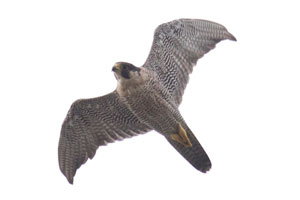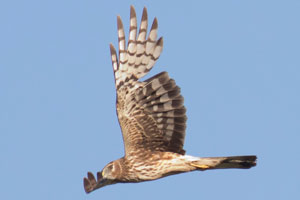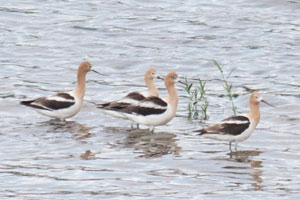Seasonal Report - Summer 2017

Lycoming County Summer 2017 Summary
The summer season was not terribly exciting in Lycoming County this year, either in terms of birds or weather. There were very few notable reports, but the first county record of American Avocet was added, which was easily the season's biggest highlight. Four seasons in a row, and five of the last six, have had a first county record. Most of the other "rarities" this season came from relatively common migration species that stuck around into June.
In total, 133 species were reported in Lycoming County during the summer.
Observations
Observers include: Bobby Brown (BB), David Brown (DB), Deb Brown (DeB), Bob Brown (BoB) (BB, DB, DeB, BoB collectively as Browns), Dan Brauning (DanB), Jean Dalton (JD), Maddi Dunlap (MD), Wes Egli (WE), Dave Ferry (DF), C. Harbach (CH), Eric Hartshaw (EH), Jared Hollick (JH), Andy Keister (AK), Steve Pinkerton (SP), David Rothrock (DR), Joe Yoder (JY)
m.obs. = many observers
NFC Station = Microphone/recorder set up to record nocturnal flight calls, but not monitored in real time (currently, the only permanently installed one in Lycoming County is in Montoursville)
ph. = Observations of uncommon or unexpected species that were documented with photos include a ph. designation along with the observers. Most of those photos can be found on eBird.
Waterfowl
The only notable waterfowl report during the summer was a Swan sp. briefly seen 6/25 at the Williamsport Dam, which was likely a Trumpeter Swan (JY).
Other Waterbirds
A Common Loon was seen at Rose Valley Lake on 6/1 (BB, DeB, BoB) and 6/10 (BB, DeB). A bird in breeding plumage was also observed along the river in mid-June, including 6/13 and 6/17 at Mill St. (BB, DeB, BoB). A different bird, in first-summer plumage, was found at the Williamsport Dam on 6/19 (DB, MD). A Horned Grebe spent most of June at Rose Valley Lake (BB, et al.). Double-crested Cormorants were regularly seen along the river throughout the summer, with a majority of the sightings coming from the Williamsport Dam (DB, et al.). The only Great Egret sighting of the season came from a photo taken 7/27 on Lycoming Creek by a non-birder (via SP).
Raptors and Owls

Black Vultures were observed with some regularity, continuing the trend of an increasing presence of that species in Lycoming County.
There were a few Osprey sightings during the summer, but no evidence of nesting. Several Northern Harriers were seen in Cogan House Twp. and Jackson Twp. on 6/24 (Browns), including a male and female seen in close proximity to each other, suggesting that nesting was possible. Sharp-shinned Hawk reports were limited to the area around Pine Creek. Red-shouldered Hawks were reported in a few areas where they may be nesting.
All three of the expected falcon species were confirmed to be nesting in Lycoming County this year. A Merlin nest was confirmed in Loyalsock, with 3 young successfully fledging, and another nest was suspected west of Williamsport. At least one of the young Peregrine Falcons at the new nest site near Montgomery Boat Launch fledged. The nest at the Market St. Bridge was unsuccessful again this year.
A Barn Owl was recorded calling over Montoursville the evening of 6/10 (DB NFC Station).
Cranes and Rails
Virginia Rails were detected by nocturnal flight call over Montoursville on 6/23 and 7/5 (DB NFC Station).
Shorebirds

Shorebirds sightings in July seemed a little more frequent than normal. The best sighting of the season was 4 American Avocets at the Williamsport Dam on 7/14 (DB, MD, et al., ph.), a first Lycoming County record of that species. A Semipalmated Sandpiper was found at a small wetland in Muncy on 7/23 (BB, DeB, BoB), which is possibly the first time the species has been recorded in Lycoming County during a summer. Solitary Sandpipers were also observed, especially towards the end of July.
Gulls and Terns
There were scattered sightings of Ring-billed Gulls, but no other gull species were reported during the summer. No terns were reported.
Woodpeckers
Red-headed Woodpeckers were present in the Slate Run area again this year, although nesting was not confirmed. Another bird passed through Eldred Twp. on 6/16 (JD).
Flycatchers
The Acadian Flycatcher that was first found at Mill St. in mid-May stayed the entire summer. There was no evidence of a second bird for nesting, but the bird was favoring a small tree line tucked in between a farm field, soccer field, and a small meadow area, which is not typical habitat for the species. There were also sightings in more expected locations.
Swallows
Purple Martins were confirmed to be at a martin house in the southern part of the county on 6/25 (Browns), but no info is known about the success of nesting there. There were only a pair of sightings of Bank Swallows during the summer, with 3 seen in the Picture Rocks area on 7/4 (BB, DeB, BoB) and one at Mill St. on 7/12 (BB, DeB). Cliff Swallows were seen regularly during the summer at several nest sites.
Nuthatches
There were scattered reports of Red-breasted Nuthatches during the summer, but probably fewer than expected, considering the elevated numbers during winter and the entire spring.
Wrens
The only Winter Wren observation was in the Slate Run area on 6/11 (Browns).
Thrushes
Migrant Gray-cheeked Thrushes continued to be detected over Montoursville through 6/7 (DB NFC Station). Swainson's Thrushes were detected as late as 6/29 (DB NFC Station).
Warblers
There were few surprises with warblers during the summer. 20 warbler species were reported, all of which likely nest yearly in Lycoming County, including Worm-eating Warbler, Mourning Warbler, Cerulean Warbler, Pine Warbler, Yellow-rumped Warbler, and Prairie Warbler.
All warbler species reported:
- Ovenbird
- Worm-eating Warbler
- Louisiana Waterthrush
- Black-and-white Warbler
- Mourning Warbler
- Common Yellowthroat
- Hooded Warbler
- American Redstart
- Cerulean Warbler
- Northern Parula
- Magnolia Warbler
- Blackburnian Warbler
- Yellow Warbler
- Chestnut-sided Warbler
- Black-throated Blue Warbler
- Pine Warbler
- Yellow-rumped Warbler
- Prairie Warbler
- Black-throated Green Warbler
- Canada Warbler
Sparrows
Grasshopper Sparrows were observed at Mill St. throughout the season, and a few were found in Cogan House Twp. on 7/3 (Browns). Field Sparrows were reported in many areas, and were particularly numerous at SGL 252. Dark-eyed Juncos were found in high-elevation areas in both the northern and southern part of the county.
Blackbirds
Bobolinks were quite numerous in Cogan House Twp. and Jackson Twp., where they nest annually. Likewise, Eastern Meadowlarks were found in their normal areas, with Mill St. continuing to be a reliable site. There were scattered reports of Orchard Orioles, but a nest site at Canfield Island observed in May and early June appeared to have been abandoned suddenly.
Other Sightings of Note
The only Common Nighthawk sighting of the season was over Montoursville on 6/6 (BB).
Despite the state-wide irruption during the summer, Lycoming County did not record a Dickcissel on the ground, but the species was detected by nocturnal flight call over Montoursville on 6/5, 6/12, 6/16, and 6/29 (DB NFC Station).
Conclusion
A relatively calm summer will hopefully give way to some exciting finds in the fall. Of course, American Avocet is a nice addition to the county list, and extends the seasonal county record streak (spoiler alert: August already extended the streak for the fall season, and makes it five in a row, check back in December for more on that…). Onward to fall!
The Summer 2017 report was compiled and written by Bobby Brown. Our seasonal reports cover March-May (Spring), June and July (Summer), August-November (Fall) and December-February (Winter) to better line up with migration, breeding and wintering timings.
